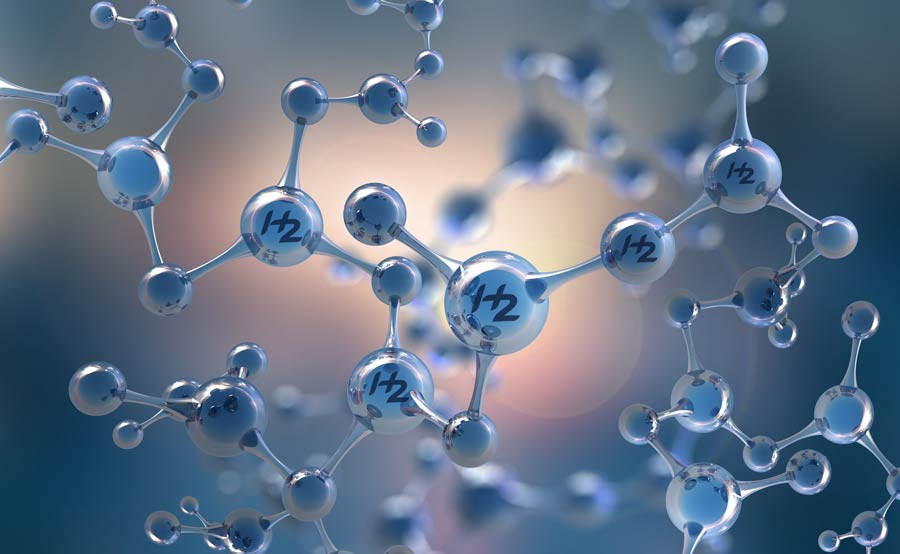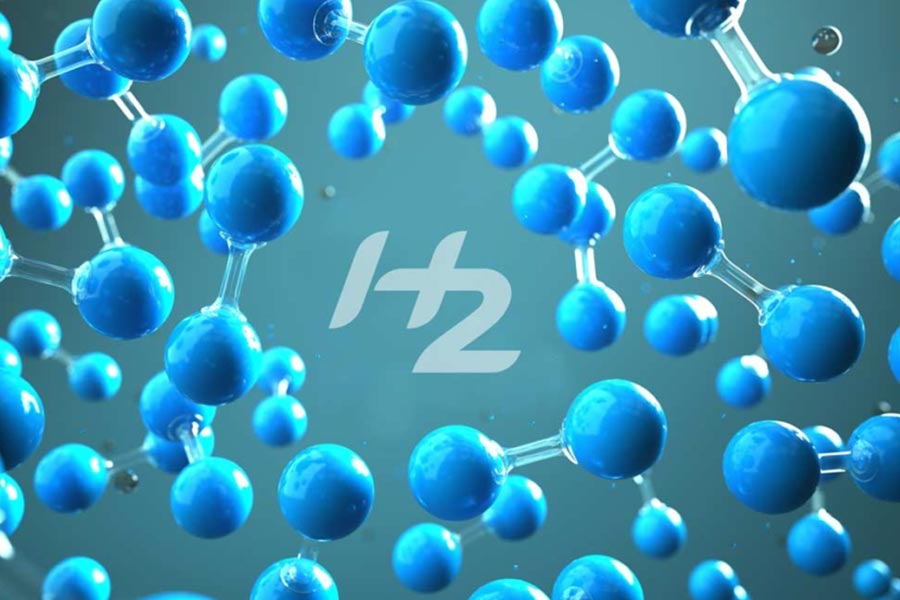Hydrogen A to Z Series: B For Blue Hydrogen
By: GenH2 Staff
Read Time: 3 minutes
Defining the Hydrogen Economy from A to Z: B is for Blue Hydrogen
Previously in our, Defining the Hydrogen Economy from A to Z series, we discussed Adsorption and the important role it plays in hydrogen storage. Today we continue through to the second letter of the alphabet, B is for Blue Hydrogen.
For a colorless gas, it may come as a surprise that in the production of hydrogen there are multiple colors in the rainbow used to describe the level of hydrogen purity produced, the process used, and its source. Most hydrogen gas that is already widely used for industrial applications is either “brown,” (another associated word with the letter B) if it is made through the gasification of coal or lignite; or “grey,” if it is made through steam methane reformation, which typically uses natural gas as the feedstock and produces carbon dioxide (CO₂) as the by-product. Currently, the majority of the hydrogen produced for industrial use – in refineries and manufacturing plants – is “grey” hydrogen. There is also a process where grey hydrogen can become blue hydrogen by capturing the CO2 produced and thus reducing the carbon footprint.

GenH2 is a World Leader and Pioneer in Hydrogen Manufacturing
Defining Blue Hydrogen: Since blue hydrogen is made using natural gas but allows for the separation and capture of CO₂, this approach is being addressed by companies like Shell and used to help the global community begin moving towards a cleaner energy future in a phased approach. Blue hydrogen production is currently less than the cost of green hydrogen production and a transitory path from fossil fuels, but the market suggests that creating a more environmentally friendly blue hydrogen require a capital investment in capturing the CO₂ and disposing of it in a productive manner – such as deep underground caverns or using it in some beneficial manner – such as in advanced oil recovery. As some leaders in the hydrogen community are looking at the production of Blue Hydrogen and the captured CO2 approach for multiple pathways in getting to their future goals, new technologies in CO2 capture are also being investigated and demonstrated which is highly valuable to the overall goals of reducing the carbon footprint of the energy and power industries.
One of the advanced pathways of hydrogen production that is now emerging with global attention is via methane pyrolysis, which provides a viable transition from a blue hydrogen pathway to a greener hydrogen. This process is now more commonly referred to as another color of Blue, “turquoise”. Hydrogen is produced from a methane source with carbon as a by-product which can be used in applications that involve the use of carbon black, graphite, carbon fiber, carbon nanotubes (CNTs), graphene and other derivatives.
Companies like GenH2 are also developing innovative approaches for liquid-based hydrogen infrastructure solutions. We hope you continue to follow us as next week we dive into another exciting letter in our, Defining the Hydrogen Economy from A to Z blog series.
 Copyright All Rights Reserved GenH2
Copyright All Rights Reserved GenH2
 Copyright All Rights Reserved GenH2
Copyright All Rights Reserved GenH2 Copyright All Rights Reserved GenH2
Copyright All Rights Reserved GenH2